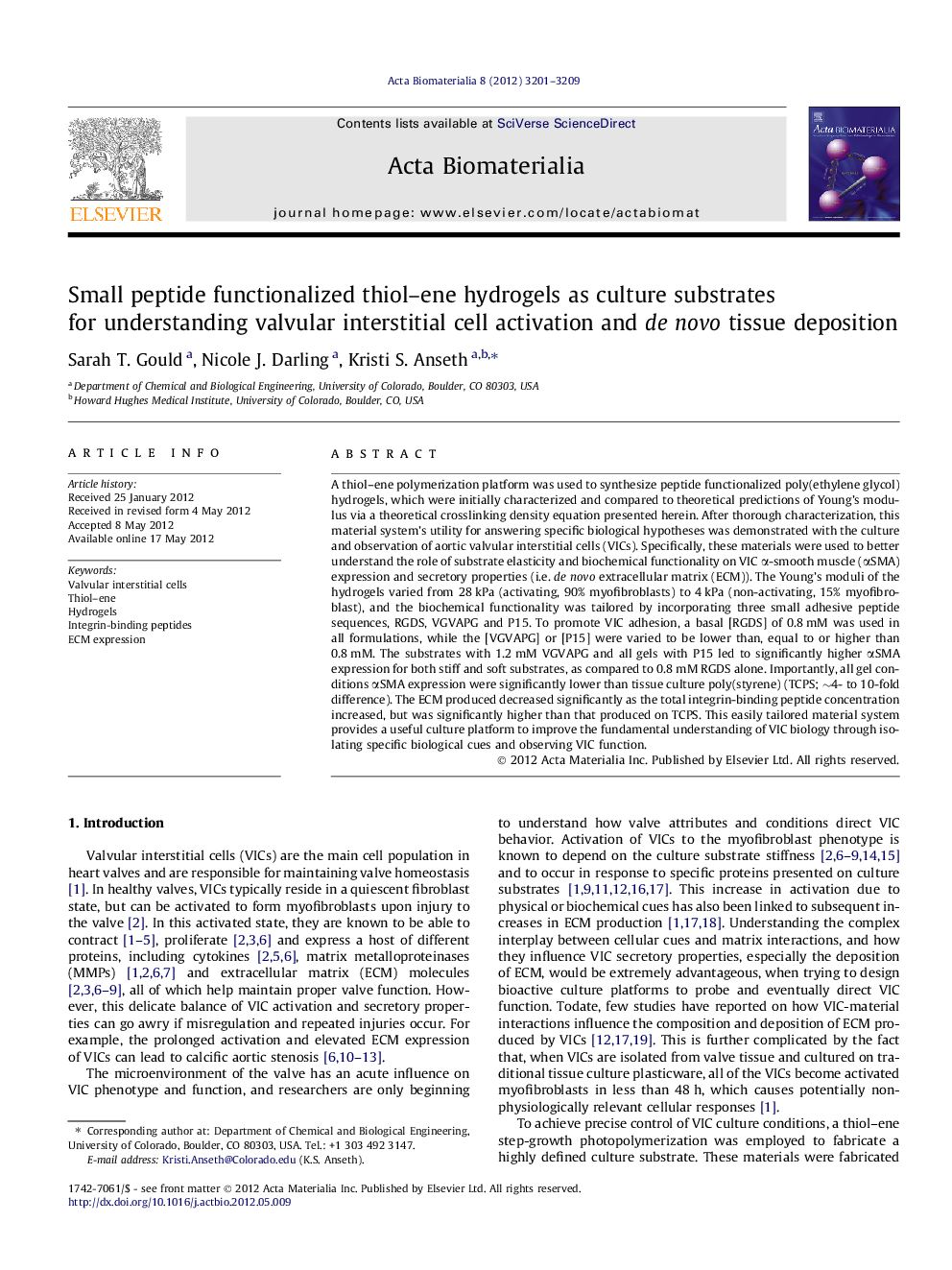| Article ID | Journal | Published Year | Pages | File Type |
|---|---|---|---|---|
| 593 | Acta Biomaterialia | 2012 | 9 Pages |
A thiol–ene polymerization platform was used to synthesize peptide functionalized poly(ethylene glycol) hydrogels, which were initially characterized and compared to theoretical predictions of Young’s modulus via a theoretical crosslinking density equation presented herein. After thorough characterization, this material system’s utility for answering specific biological hypotheses was demonstrated with the culture and observation of aortic valvular interstitial cells (VICs). Specifically, these materials were used to better understand the role of substrate elasticity and biochemical functionality on VIC α-smooth muscle (αSMA) expression and secretory properties (i.e. de novo extracellular matrix (ECM)). The Young’s moduli of the hydrogels varied from 28 kPa (activating, 90% myofibroblasts) to 4 kPa (non-activating, 15% myofibroblast), and the biochemical functionality was tailored by incorporating three small adhesive peptide sequences, RGDS, VGVAPG and P15. To promote VIC adhesion, a basal [RGDS] of 0.8 mM was used in all formulations, while the [VGVAPG] or [P15] were varied to be lower than, equal to or higher than 0.8 mM. The substrates with 1.2 mM VGVAPG and all gels with P15 led to significantly higher αSMA expression for both stiff and soft substrates, as compared to 0.8 mM RGDS alone. Importantly, all gel conditions αSMA expression were significantly lower than tissue culture poly(styrene) (TCPS; ∼4- to 10-fold difference). The ECM produced decreased significantly as the total integrin-binding peptide concentration increased, but was significantly higher than that produced on TCPS. This easily tailored material system provides a useful culture platform to improve the fundamental understanding of VIC biology through isolating specific biological cues and observing VIC function.
